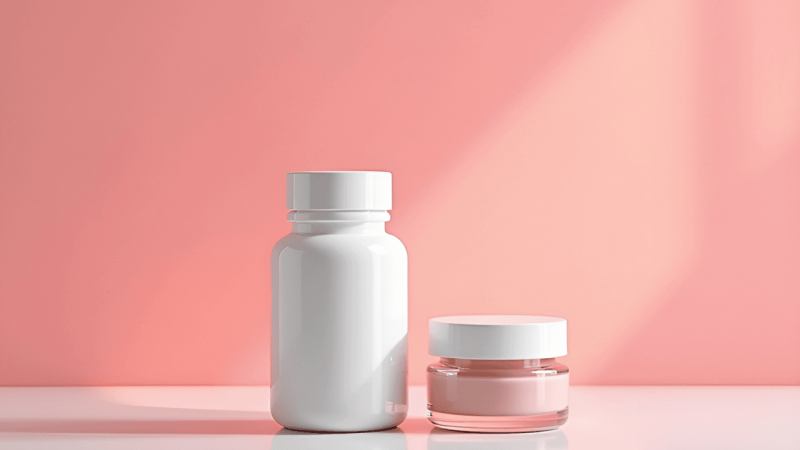
NAD Supplements vs IV Therapy: Which is Best?
If you’ve been searching for ways to supercharge your energy or combat the signs of aging, you’ve probably come across NAD (nicotinamide adenine dinucleotide).
But here’s the real question: Should you take it as a supplement or opt for the more intensive IV therapy?
In this article, we’ll discuss:
- The key differences between NAD supplements and NAD IV therapy.
- The pros and cons of each option to find out which method fits best with your lifestyle and health goals.
- Why some methods of NAD delivery are more effective than others and how absorption plays a crucial role.
- How to tailor your NAD supplementation using personalized testing to match your unique health needs.

What is NAD?
NAD is a vital molecule found in every living cell of the human body. It serves as a coenzyme, meaning it assists enzymes in carrying out chemical reactions essential for life. NAD exists in two forms: NAD+ and NADH.
At its core, NAD+ is an electron courier. It shuttles electrons between different molecules during cellular metabolism, the process by which cells break down nutrients to generate energy.
The body produces NAD+ through three main pathways:
- De novo synthesis: Creating NAD+ from scratch using amino acids.
- Preiss-Handler pathway: Utilizing dietary niacin (vitamin B3) to form NAD+.
- Salvage pathway: Recycling NAD+ components, primarily nicotinamide, after it has been used by enzymes.
In mammals, including humans, the salvage pathway is the primary source of NAD+. This efficient recycling process helps maintain adequate levels of this essential molecule.
NAD’s role extends beyond basic metabolism, influencing processes like DNA repair, gene expression, and cellular aging.
Types of NAD Treatments

Boosting NAD levels has become increasingly popular, and there are several types of NAD treatments available, each with its own advantages and considerations.
Oral NAD Supplements
NAD supplements come in various oral forms, including pills, capsules and pure powders. These products contain NAD precursors or related compounds designed to elevate NAD levels in the body. When ingested, a NAD+ supplement will pass through the digestive system and enter the bloodstream, where it circulates to cells throughout the body.
Many people choose oral NAD supplements as a straightforward way to increase their NAD levels. This method appeals to those who prefer to avoid intravenous treatments, offering a more familiar and less invasive approach to supplementation.
NAD IV Therapy
NAD+ IV therapy is a new treatment where NAD+ is delivered directly into your bloodstream via an intravenous (IV) drip. During the session, a healthcare professional inserts a small IV line into your arm. The NAD+ solution is infused over a set period, allowing for direct absorption into your bloodstream. This bypasses the digestive system, leading to quicker availability of NAD+.
Dosages can vary depending on your needs, but typical sessions might range from 250 mg to 1,000 mg of NAD+. Treatments usually last between 1 to 3 hours, but some can go 4 hours or even longer depending on the dose and your needs. Many people opt for multiple sessions spread over weeks or months.
Other NAD Therapies
Beyond oral supplements and IV therapy, two additional methods for increasing NAD+ levels have gained some traction: injection therapy and nasal sprays.
NAD Injections
NAD+ injections offer a middle ground between oral supplements and IV therapy. This method delivers NAD+ directly into the bloodstream through intramuscular or subcutaneous injections.
NAD Nasal Sprays
NAD+ nasal sprays are a novel approach to NAD+ supplementation. These sprays deliver NAD+ through the nasal passages, claiming to deliver rapid absorption into the bloodstream.
Pros and Cons of NAD Supplements and IV Therapy

The quest for higher levels of NAD boils down to two main contenders: pills and supplements or intravenous therapy. Both have their benefits and downsides. Here we break down the pros and cons of NAD supplements versus IV drips, so you can figure out which method is best for cellular vitality.
Effectiveness
The effectiveness of NAD supplements or IV therapy depends largely on how well the body absorbs and utilizes the different delivery methods.
NAD supplements or precursors are compounds that can be efficiently taken up by cells and converted into NAD+ through various intracellular pathways. Once inside the cell, these precursors are metabolized to increase intracellular NAD+ levels. NAD precursors increase intracellular NAD+ levels by feeding into biosynthetic pathways, thereby supporting various NAD+ dependent processes.
Unlike NAD+ precursors, which are converted into NAD+ within cells, the primary action of NAD+ IV therapy is believed to be extracellular, influencing immune responses, inflammation, and cellular signaling1 rather than directly increasing intracellular NAD+ levels.
Oral supplements are generally well-absorbed but may take longer to produce noticeable effects. In contrast, IV therapy introduces NAD+ directly into the bloodstream, resulting in more rapid onset of effects.
While IV treatments can provide a quick boost, their effects may be short-lived. This is due to several factors:
- Rapid Clearance: NAD+ is quickly eliminated from the plasma, often within two hours of infusion.
- Cellular Penetration: The relatively large size of NAD+ molecules can impede their ability to cross cell membranes efficiently.
- Dosage Considerations: The amount and frequency of NAD+ administration significantly impact its effectiveness.
Oral NAD+ precursors offer a more consistent and sustained approach to increasing NAD+ levels. A 2019 study2 demonstrated that oral supplementation can effectively elevate whole blood NAD+ levels over time:
| Dose | NAD+ Increase |
| 100 mg | 22% |
| 300 mg | 51% |
| 1000 mg | 142% |
These results were observed after two weeks of supplementation.
Despite its rapid clearance from the bloodstream, NAD IV therapy may still have potential benefits for certain medical conditions, particularly some neurological and infectious diseases.
To maximize the benefits of NAD+ supplementation, it’s important to consult with a healthcare provider to determine the most appropriate method and dosage regimen for individual needs and health goals.
Convenience
Supplements are generally the easier option in terms of convenience. You can take them as pills or mix a powder into a drink, making them a quick addition to your daily routine. No special setup or assistance is needed, so you can easily incorporate them into your day.
In contrast, IV therapy requires you to visit a clinic or healthcare professional. This involves scheduling an appointment and waiting, which can be less convenient if you have a busy lifestyle. The procedure typically spans several hours, during which the patient must remain relatively stationary.
The time investment for each method differs significantly:
- Oral supplements: Consumption takes mere seconds
- IV therapy: Sessions last between 1 to 4 hours or more
This time disparity can be a deciding factor for individuals with demanding schedules or limited flexibility in their daily routines.
In terms of availability, supplements win hands down. Oral supplements are widely available through retail stores and online platforms. IV therapy is limited to specialized clinics, which may not be present in your geographic area.
If convenience is a top priority for you, oral supplements offer a simpler, quicker, and more accessible option compared to NAD IV infusion.
Cost
Generally, dietary supplements are much more affordable. A typical bottle of NAD+ supplements can cost anywhere from $20 to $150, depending on the brand and dosage.
On the other hand, IV treatments can range from $150 to $500 per session. That can go even higher in expensive cities or at high-end clinics with state-of-the-art equipment. Add-ons like vitamins, minerals, or hydration boosters can also push up the price, so it’s worth checking what’s included before you book!
This price difference makes supplements a more accessible choice for daily or regular use. While supplements are more wallet-friendly, it’s also important to think about the long term.
If you’re considering regular IV therapy, those costs can add up quickly. For example, if you plan to have one treatment a month, that could mean spending anywhere from $1,800 to $6,000 a year.
The price disparity between these methods is substantial:
| Method | Cost per Unit | Estimated Annual Cost (Monthly Use) |
| Oral | $20-$150/bottle | $240-$1800 |
| IV | $150-$500/session | $1,800-$6,000 |
It’s essential to evaluate how often you intend to receive these treatments and whether they fit your budget in the long run. Your decision should take both immediate and ongoing expenses into account.
Safety and Side Effects
Supplements are generally safe and well tolerated, particularly in the forms of NAD precursors when taken at recommended doses. Studies have shown that they have a favorable safety profile and are relatively safe for use as a dietary ingredient3.
A study conducted in Japan found that a single oral dose of NAD precursor supplement up to 500 mg is safe for healthy men. Researchers observed no significant changes in vital signs like heart rate, blood pressure, or body temperature.4
However, for some individuals, they can experience common side effects like muscle pain, fatigue, sleep disturbances, and headaches5. These symptoms are usually short-lived and resolve quickly.
IV therapy, while highly effective for certain conditions, also carries additional risks.6 Patients may experience pain, bruising, or swelling at the site of infusion. Some individuals have reported additional NAD IV therapy side effects that impact the entire body, including headaches, fatigue, and nausea. These reactions can differ in intensity from person to person.
In rare cases, IV therapy can lead to serious complications, like infections or allergic reactions7.
Additionally, NAD IV therapy has been linked to higher levels of high-sensitivity C-reactive protein (hs-CRP), a marker of inflammation. Our research has found that about 70% of people who receive NAD IV therapy experience a 3- to 10-fold increase in hs-CRP levels, which can trigger an inflammatory response in some individuals.
Elevated hs-CRP levels are assoicated with an increased risk of cardiovascular (CV) events and atherosclerosis8. Therefore, monitoring hs-CRP levels and finding effective ways to manage inflammation is crucial for keeping patients safe during and after treatment.
Before starting either treatment, it’s also important to consider contraindications. Certain medical conditions can also make these therapies unsuitable.
Also, keep in mind that age can play a role. Older adults might respond differently due to various health issues or changes in metabolism. If you’re pregnant or breastfeeding, it’s also important to consult your healthcare provider as well, since the effects of NAD therapies in these cases aren’t fully understood yet.
Always take the time to discuss any new supplements or therapies with your healthcare provider. They can help ensure that whatever you choose is a safe fit for your individual health needs and circumstances.
Staying informed and cautious is key!
Choosing Between NAD Supplements or IV Therapy

NAD supplements provide a convenient and accessible method for long-term NAD support. These supplements are typically taken daily and can be easily integrated into existing routines. Clinical data suggests that oral NAD precursors can effectively raise intracellular NAD levels over time.
Benefits of NAD Supplements:
- Can increase intracellular NAD+
- Convenience of at-home use
- Lower cost compared to IV therapy
- Suitable for long-term, consistent use
- Minimal risk of complications
Considerations:
- Slower onset of effects
- Potential for reduced bioavailability due to digestive processes
IV NAD therapy delivers NAD directly into the bloodstream, bypassing the digestive system. This method allows for rapid absorption and potentially higher bioavailability.
Benefits of NAD IV Therapy:
- Rapid onset of effects
- May be beneficial for acute conditions or rapid recovery
Considerations:
- Requires clinical administration
- Higher cost per treatment
- Time-intensive procedure
- Potential for adverse reactions
- Influences signaling and metabolism outside the cell
The decision between oral supplements and IV therapy should be based on individual health needs, goals, and practical considerations.
Oral Supplements May Be Preferable For:
- General wellness and anti-aging support
- Long-term NAD maintenance
- Those seeking a cost-effective, convenient option
IV Therapy May Be More Suitable For:
- Individuals with acute health concerns requiring rapid intervention
- Those with conditions affecting nutrient absorption
- Athletes or individuals recovering from intense physical exertion
In some cases, a combination approach may be beneficial. For example, initiating treatment with IV therapy rapid delivery of extracellular NAD+, followed by oral supplementation to increase intracellular NAD+ levels and provide sustained benefits.
If you’re unsure about your current NAD levels, our intracellular NAD test can provide valuable insight and help you tailor your approach. Understanding your NAD status can guide your decision on whether to start with supplements, IV therapy, or a combination of both.
Frequently Asked Questions

What are the benefits of NAD supplements?
NAD supplements offer potential long-term health benefits. NAD precursors have been shown to boost cellular energy production and support the body’s repair mechanisms. Research suggests they may contribute to slowing certain aspects of biological aging.
Are NAD Supplements as Effective as IV?
NAD+ IV therapy offers potential benefits for individuals with conditions like dementia, addiction, Lyme disease, and long COVID. This treatment delivers a high dose of NAD+ directly into the bloodstream, providing rapid but short-term relief. However, the effects are temporary, and the therapy requires administration by healthcare professionals in clinical settings.
For long-term benefits, including improved energy, performance, and longevity, intracellular NAD+ levels need to be increased. Oral NAD+ precursor supplements, available in pill or powder form, offer a more practical and sustainable approach. These supplements can be easily incorporated into daily routines and are designed to boost intracellular NAD+ levels over time.
Who should avoid or take NAD supplements?
Aging adults might find these supplements helpful as NAD levels naturally decline with age, potentially supporting cellular energy production and DNA repair. Athletes and fitness enthusiasts may be drawn to NAD’s role in energy metabolism, which could enhance physical performance and recovery. Individuals with specific health concerns, such as conditions linked to mitochondrial dysfunction or metabolic disorders, might also benefit from NAD supplementation.
However, certain groups should exercise caution. Pregnant or nursing women should avoid NAD supplements due to limited research on their effects during pregnancy and lactation, unless directed by a healthcare provider. Individuals with liver disease, kidney problems, or certain types of cancer should consult their doctor before use, as these supplements may interact with their condition or treatment.
Discover our NAD test kit to determine your levels and personalize your supplementation.
Discover Your NAD+ Levels with Jinfiniti

Curious about your NAD+ levels?
Jinfiniti offers an easy way to find out where you stand.
Understanding your NAD+ status can help you tailor your health approach, whether you’re aiming for energy boosts, better recovery, or overall wellness.
Our testing process is simple and provides valuable insights that can inform your next steps, whether you choose supplements, IV therapy, or both.
Discover your NAD+ levels with Jinfiniti today and discover your way to a more vibrant life. Knowing your body’s needs is the first step toward optimizing your health journey!
Referenced Sources:
- https://www.frontiersin.org/journals/aging-neuroscience/articles/10.3389/fnagi.2019.00257/full ↩︎
- https://pubmed.ncbi.nlm.nih.gov/31278280/ ↩︎
- https://www.sciencedirect.com/science/article/pii/S2666027X24000240 ↩︎
- https://pubmed.ncbi.nlm.nih.gov/31685720/ ↩︎
- https://pubmed.ncbi.nlm.nih.gov/37971292/ ↩︎
- https://www.medicalnewstoday.com/articles/intravenous-injection#risks-and-side-effects ↩︎
- https://www.medicalnewstoday.com/articles/infusion-reaction ↩︎
- https://www.ncbi.nlm.nih.gov/pmc/articles/PMC3632154/ ↩︎
Read More














